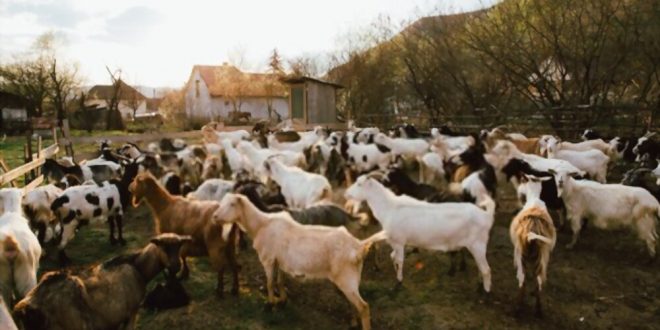The best way to form an initial herd of goats is to clearly define the breeder’s objectives and acquire the breeds from suitable breeders, with tradition in the activity. The animals must be healthy, with reproductive and productive devices in perfect condition, vaccinated and dewormed and have a record with routine zoo technical information.
According to Paulo Roberto Celles Cordeiro, professor of the CPT Industrialization Course for Goat Milk, “The first step is to seek guidance from those who understand: a technician or the Association of Breeders of your State or Municipality”. It is important not to introduce goats to the property without subjecting them to scrutiny or quarantine.
The choice of breed is linked to several factors, such as:
– Marketplace;
– Animals’ skills in relation to the breeding objectives;
– Adaptation to climate and location.
The mischaracterization of the breed (mixture of crossings or crossings with goats without selection) implies the loss of the traits of the breed and its aptitudes.
- Main characteristics of dairy and mixed goat breeds
The European dairy breeds that have stood out the most are:
– Saanen
They are white, haughty goats, largest milk producers, largest and most demanding food consumers. Lactation period of 8 to 10 months, with at least 3 kg of milk per day. A fertile female frequently obtains two kids per pregnancy, sometimes three. It requires a containment system and good care.
– Toogenburg
Toogenburg goats have a grayish-brown coat (hairy or not) and with white stripes on their faces. Richer than Saanen, good dairy (2 kg), good producer, usually has twins. It lives well on both systems.
– Parda
Pardas goats are colored brown and black, slightly smaller than Saanen, more rustic and also good milk producers. For 8 to 9 months they usually give 2 kg of milk a day.
– Anglo-Nubian
They are goats of double aptitude (milk and meat), colored coat, big ears, fleshy nose, usually owls. They produce 2 kg of milk per day for 7 months. The goats go to slaughter at 3 months old with 21 kg.
2- Advantages of raising goats
– Small, the goat is equivalent to a miniature cow. According to the US (Department of Agriculture), eight goats consume the same amount of food as a cow;
– In proportion to their weight, goats are more efficient milk producers than cows;
– Goats are of great social importance for rural populations with less purchasing power, where their exploitation may have a family character;
– Advisable, also, for exploration in fragmented areas or where intensive crops are processed, with emphasis on vegetable crops;
– Goats are of paramount importance where the exploitation of the dairy cow would be inefficient and uneconomic;
– The cost of purchasing the goat is lower than that of the cow and its loss proportionally represents less loss;
– Goat’s milk, compared to cow’s, is more nutritious, more assimilable, with a higher mineral concentration (Ca, Fe, P and Cu). Therefore, it is recommended for more delicate organisms, such as children, the elderly and the sick. Still, goat’s milk is ideal for the manufacture of sophisticated cheeses of high consumption in the national and international markets;
– The goat adjusts to the most varied types of management, up to that of the complete stall and does not depend on the calf for low milk;
– The goat has a short reproductive cycle in relation to the cow and a higher number of calves per calving, allowing rapid evolution of the herd;
– The goat’s manure (manure), around 600 kg / animal / year, is richer in nutrients than that of most species;
– The goat supplies, in addition to milk, meat and skin;
– The goat has good digestive power for cellulose;
– The goat is sociable, gentle, intelligent, clean, attractive, rustic and obedient. Integrates easily with man.
3- Disadvantages of goat farming
– Prejudices against the species and its milk;
– Demanding from the food point of view;
– Little indicated for extensive management, in a humid environment, as it is highly predisposed to worms and pneumonia;
– Their highly diversified feeding habits hinder their confinement with little varied food, forcing the breeder to keep constant attention, in order to avoid, in confined goats, deficiencies and consequent anemia;
– Predatory and difficult to contain, it causes damage when not handled correctly;
– Milking more laborious than bovine.
